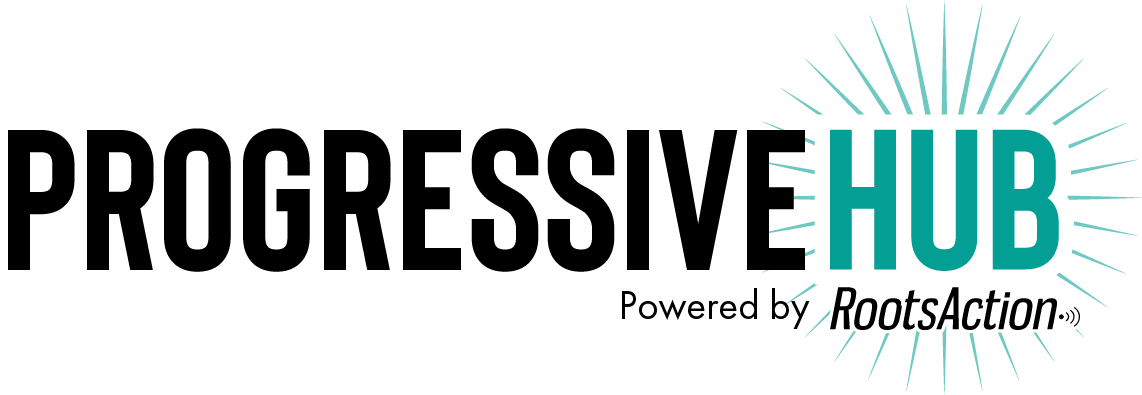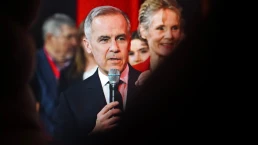A new study of voters in the United States and five other countries finds that those on the far right become much more supportive of redistributive policies when they know the true extent of the wage gap problem.
By Christopher Hoy, Inequality.org
Conventional wisdom claims that far-right voters are the least supportive of redistribution and the least likely to change their minds when faced with facts about inequality. But my recent study with Lionel Page, Catherine Eckel, Philip Grossman, and Daniel Goldstein suggests otherwise.
Drawing on surveys across six high-income countries, we find that most people dramatically underestimate wage inequality – such as the pay gap between CEOs and the average full-time worker – and most would prefer much lower levels of inequality than they believe exists. When we presented respondents with accurate information about wage inequality, this led those on the far right to become much more supportive of redistribution, narrowing a lot of the gap with voters on the left.

How unequal do people think wages are?
We surveyed over 9,000 people in Australia, France, Japan, Sweden, the United Kingdom, and the United States using nationally representative online samples. With an interactive “distribution builder,” respondents created histograms of what they believed the wage distribution looks like in their country and what they would prefer it to be. We also collected people’s beliefs and preferences about the wage levels of various occupations, including CEOs, politicians, doctors, unskilled workers, and the average full-time worker.
Across all six countries, people dramatically underestimated wage inequality. The most common misperception was underestimating the wage gap between the highest and the lowest earners. Most individuals didn’t realize just how skewed the distribution of wages truly is. What’s more, nearly everyone preferred less wage dispersion. This strong desire for lower wage inequality exists across political lines. It appears that one of the few issues both the right and the left agree on is that the wages of the richest shouldn’t be so high!
For example, the chart below shows people’s beliefs about and preferences for the ratio of CEO wages relative to the average full-time worker, alongside what is actually the case. Across countries, we found a similar pattern: people not only dramatically underestimate the ratio of the average CEO to full-time worker wages, but also prefer it to be much smaller than what they believe it is.
In the case of the United States, CEOs of publicly listed companies earn 269 times more than the average full-time worker. People thought CEOs only earned 18 times as much, and they would prefer it to be just 5 times. Even in Japan, which has the lowest ratio of CEO to full-time worker wages, the actual ratio is 59. People believed it was 8, and they wanted it to be only 5.
See Hoy et al (2025) for further details.
How do people of different political leanings respond to information on the wage gap?
To understand how people’s preferences change when they learn about the extent of wage inequality, we randomly assigned respondents to one of three groups. A control group received no information about actual wage gaps. Two “treated” groups received simple facts about wage inequality: either the pay ratio between CEOs and average workers, or the ratio of wages at the top 10 percent to the bottom 10 percent of the distribution.
On average, providing these facts had little impact on increasing people’s preferences for redistribution – except among those on the far right. After learning about actual wage disparities, these respondents became much more supportive of redistribution. We observe this pattern across a wide range of questions, including support for raising taxes on the highest 1 percent of wage earners. In some cases, the treatment dramatically narrowed the gap in redistribution preferences between far-right and far-left voters.
For example, the chart below shows the share of total respondents (across all countries) who support increased public spending on education to foster greater opportunities for children from low-income households, broken down by how respondents self-identify politically.
Note: Treatment groups received simple facts about wage inequality in their country, whereas the control groups received no information. See Hoy et al (2025) for further details.
For the control group – those not given further information about actual wage gaps – the divide between the left and right is stark, with nearly 80 percent of respondents on the left supporting higher spending on low-income households compared to just over 20 percent on the far right. By contrast, for treatment groups — those who received information about wage inequality — the gap significantly narrows, with almost half of those on the far right supporting this.
Implications for inequality and politics
Our findings show that opposition to redistribution isn’t just based on values or ideology. Misperceptions of reality also play a significant role. For most citizens, preferences stay consistent even when facts are presented. However, among far-right voters, correct information can significantly influence attitudes. We find that far-right respondents did not alter their beliefs about meritocracy or their behavior, such as their willingness to join a union. Rather, our findings appear to be driven by far-right respondents viewing the current level of wage inequality as so extreme — and perhaps unfair — that government intervention is necessary.
This matters because far-right parties, which are as popular as they have been in 80 years, often mobilize support around economic grievances while opposing redistributive policies. This leads many to believe that far-right voters’ preferences would not be influenced by correct information about wage inequality (indeed, our study includes a poll of 100 experts who predicted results in line with that sentiment). In fact, they turn out to be the most affected. As such, the political space for redistributive policies is larger than commonly believed.
For those concerned about rising polarization and inequality, the message is cautiously optimistic: communication matters, even among groups often assumed to be unmoved by facts.
Originally published by LSE Inequalities, a blog is run by the International Inequalities Institute at the London School of Economics.
Christopher Hoy is a McKenzie Research Fellow at the University of Melbourne and on external leave from the World Bank. He is an applied microeconomist working on development economics, political economy, and public finance. His research has been published in a number of leading journals as well as media outlets including the New York Times, the Economist, and the BBC. He received the 2025 Sir Tony Atkinson Prize from the Society of the Study of Economic Inequality.
Recent Posts
Zohran Mamdani & Bernie Sanders Join Striking Starbucks Workers
December 6, 2025
Take Action Now ‘This is a union town.’ Zohran and Bernie join the Starbucks picket line to demand the coffee giant reach a fair contract…
Canadian Liberals Fear Closing Arms Export Loophole Would Anger U.S.
December 5, 2025
Take Action Now A leaked briefing document gives the full picture behind the government’s talking points.By Alex Cosh, The Maple A leaked Liberal…
Video of U.S. Military Killing Boat Strike Survivors Is Horrifying, Lawmakers Reveal
December 5, 2025
Take Action Now “What I saw in that room is one of the most troubling scenes I’ve ever seen in my time in public service.”By Nick Turse, The…
There They Go Again: Trumping Up A Non-Existent Threat To Menace A Country Most Americans Couldn’t Find On A Map
December 4, 2025
Take Action Now A recent CBS News poll shows widespread public skepticism and disapproval of any US military attack against Venezuela, properly so,…




